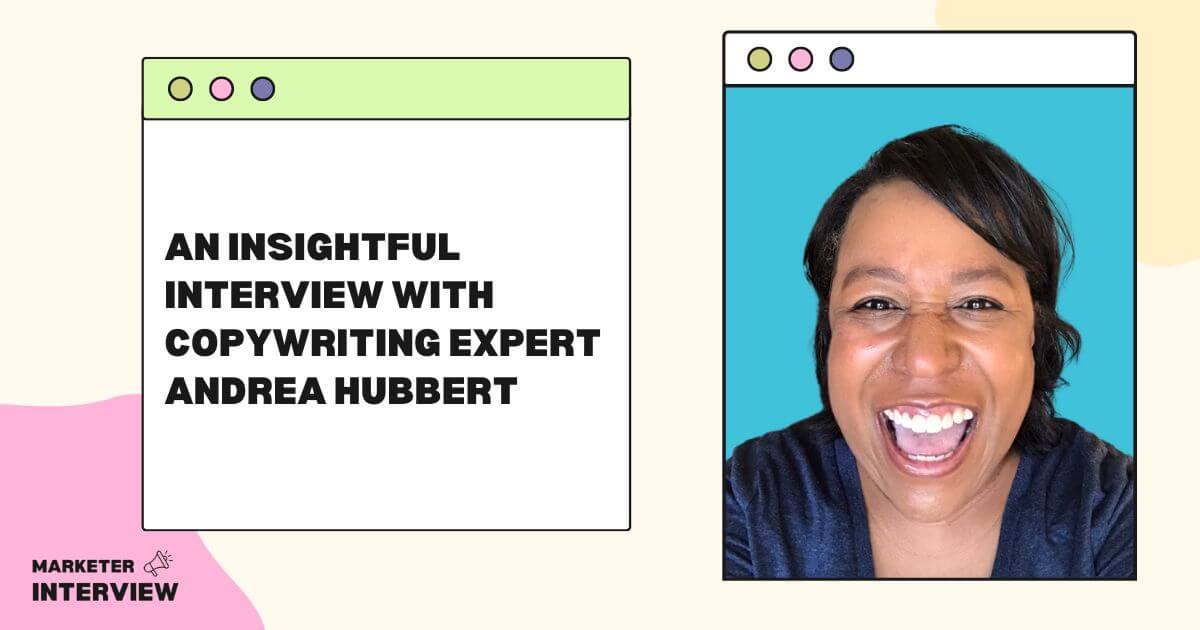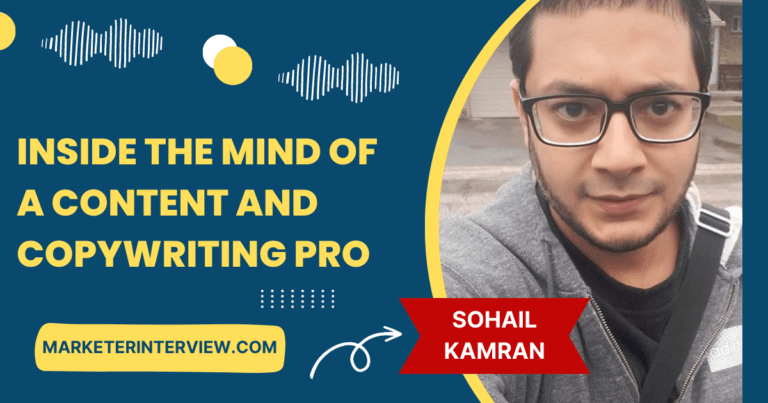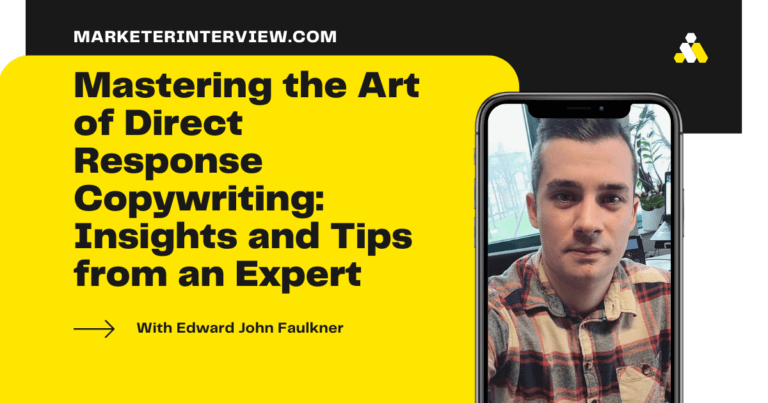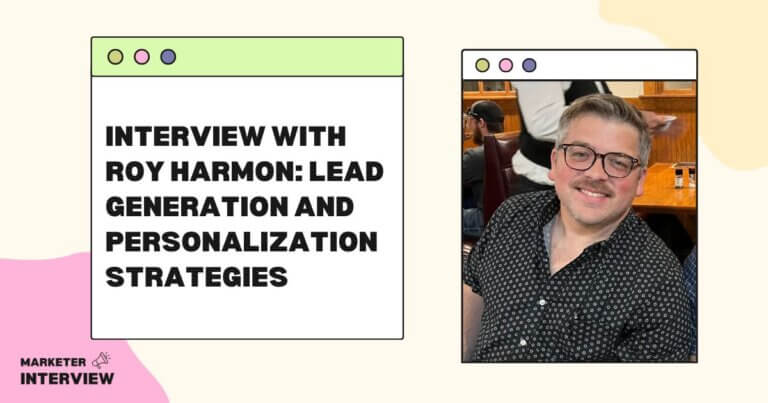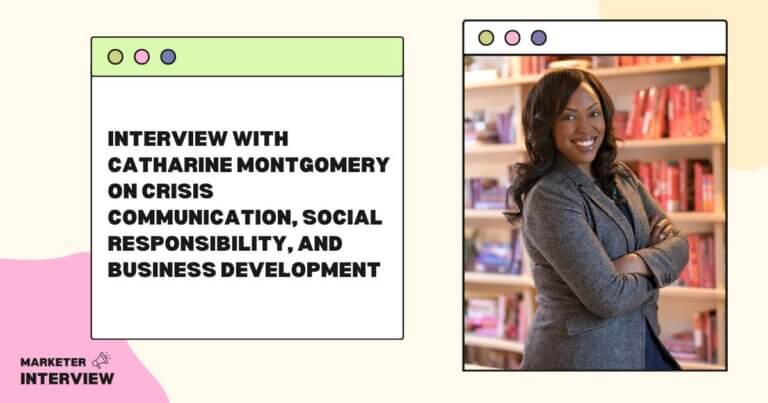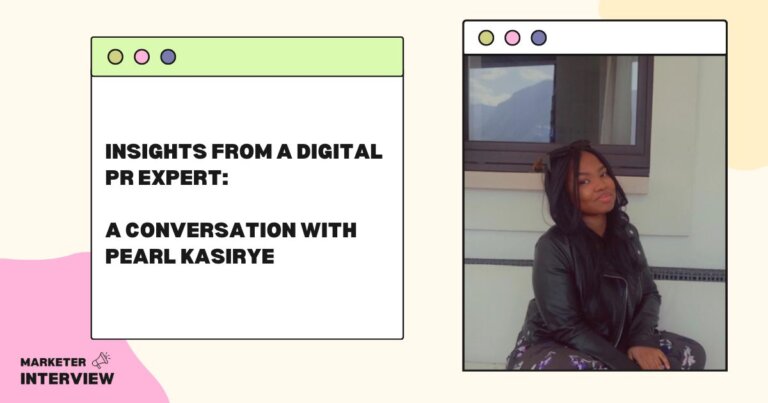An Insightful Interview with Copywriting Expert Andrea Hubbert
I am pleased to introduce Andrea Hubbert, Founder and CEO at Hub+company.
Andrea’s passion for copywriting was sparked when she was allowed to do all the PR for a major traveling art exhibit’s stop in Milwaukee while still in college.
Since then, Andrea has successfully balanced creativity and strategy in her copywriting, helping businesses and individuals craft messages that resonate with their target audiences.
In this interview, Andrea will share her insights on creating engaging and persuasive copy and balancing creativity with clear messaging.
Let’s dive in!
Contents
- 1 What inspired you to pursue a career in copywriting?
- 2 What is your approach to creating engaging and persuasive copy?
- 3 How do you stay up-to-date with the latest copywriting trends and techniques?
- 4 Can you share a particularly challenging project you worked on as a copywriter?
- 5 How do you measure the success of your copywriting efforts?
- 6 How do you balance the need for creativity with the requirements for clear and compelling messaging?
- 7 Can you walk us through your copywriting process, from research to final copy?
- 8 How do you collaborate with clients and stakeholders to ensure your copy aligns with their brand voice and messaging?
- 9 What are some common mistakes or pitfalls that novice copywriters should avoid?
- 10 What advice would you give someone interested in pursuing a career in copywriting?
What inspired you to pursue a career in copywriting?
My copywriting career began in college when I had the opportunity to do all the PR for a major traveling art exhibit’s stop in Milwaukee. I loved it!
The spark was lit, and I never looked back! Copywriting offers me the ideal balance between creativity and strategy.
After nearly three decades my passion remains strong. The power of words to connect, motivate, and encourage action continues to inspire me. Supporting businesses and individuals crafting messages that resonate with their target audiences is an honor.
What is your approach to creating engaging and persuasive copy?
I have developed a reliable process that has been instrumental in creating engaging, persuasive copy for clients.
The process begins with a meet and greet, where my client and I get to know each other. This session involves me asking questions to guarantee our collaboration gets off to a good start.
Next, I dive deep into the provided information, identifying trends, ideas, and opportunities worth exploring.
Once the foundation is set, we create a roadmap for the project.
First, I present a proposed journey map, which we collaborate on to stay aligned on goals and vision. Then, I handle content creation, contact management (for PR projects), and implementation, all while maintaining efficiency and seamless organization.
We wrap up by reviewing the outcomes against our initial goals, and share a celebratory toast to end the project. That’s my favorite part!
How do you stay up-to-date with the latest copywriting trends and techniques?
I use various resources to stay inspired and continually grow my skills: industry blogs and websites, online courses and webinars, networking and professional groups, social media, and books and podcasts.
Tapping into various engaging resources and staying committed to my professional growth keeps my skills sharp and ready for action.
I’ve faced various challenges, and while I won’t pinpoint a specific project, I can share some practical strategies that have helped me tackle obstacles and succeed in even the trickiest situations.
- Dive into research: To overcome challenges, thoroughly research the subject matter to understand client needs and goals.
- Keep communication flowing: Open communication and client collaboration are critical to navigating hurdles.
- Embrace creative problem-solving: I view every challenge as a chance for growth and learning. Tackling obstacles with a creative and flexible mindset helps to identify innovative solutions.
- Seek feedback and keep improving: You can continuously improve your work and adapt to the industry’s ever-changing demands by actively seeking input and applying constructive criticism.
How do you measure the success of your copywriting efforts?
I don’t directly access clients’ metrics, so I rely heavily on their feedback and satisfaction. When measuring my efforts I consider the following:
- Conversion rate: I focus on how effectively the copy drives desired outcomes, such as purchasing, signing up for an offer, or downloading a resource.
- Website engagement: Keeping an eye on click-through rates, time spent on pages, and bounce rates helps me understand how well my content captures and maintains interest.
- Social media shares and interactions: I don’t get into the vanity metrics game; however, monitoring likes, shares, comments, and other interactions helps me assess my content’s appeal and ability to engage the audience.
How do you balance the need for creativity with the requirements for clear and compelling messaging?
Balancing creativity with clear and compelling messaging can be a fun challenge. It’s all about finding that sweet spot where the content is engaging and imaginative while still delivering messages in a straightforward manner. Here’s how I approach this balancing act:
- Know the audience: Understanding the target audience is critical. By knowing their preferences, pain points, and expectations I can tailor copy to connect with them on a deeper level.
- Stay focused on the message: Remembering the core message while writing is essential. Creativity can help make copy more engaging and memorable, but it should always maintain clarity.
- Use creative storytelling: Storytelling is a powerful way to blend creativity with effective messaging. Incorporating relatable anecdotes or metaphors makes the content more compelling while maintaining sight of the main message.
- Keep it simple: Creativity doesn’t have to be complex. Sometimes, the most effective way to communicate a message is with simple, straightforward language.
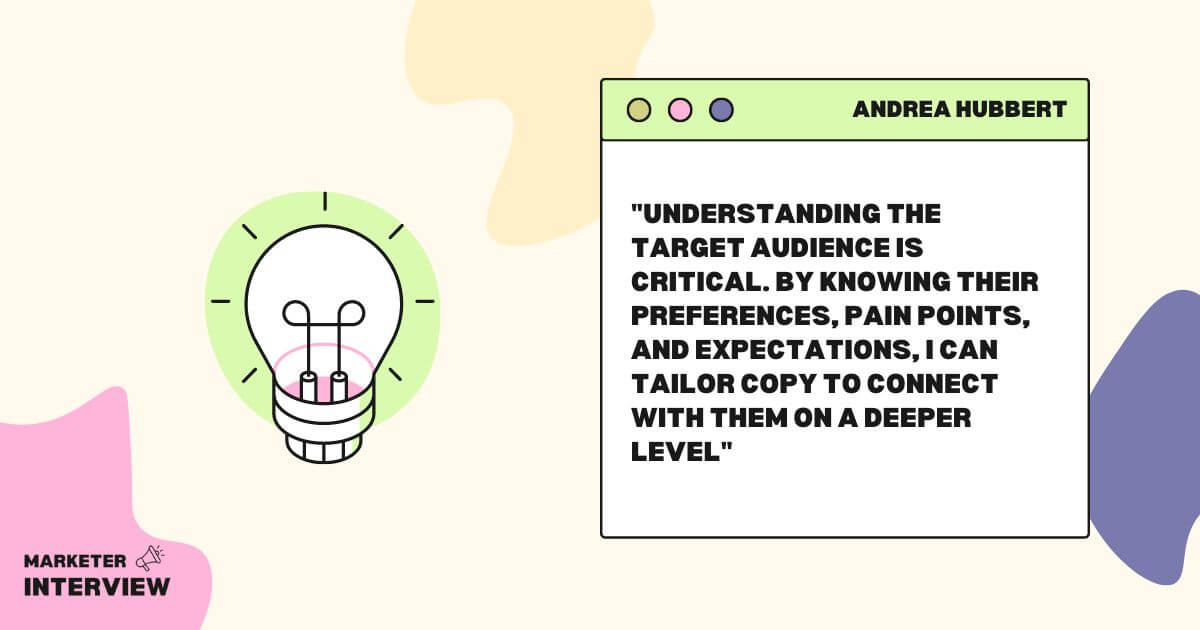
Can you walk us through your copywriting process, from research to final copy?
Absolutely. Here’s a step-by-step walkthrough of how I go from research to final copy:
- Research and discovery: The first step is gathering information about the client’s business, target audience, and objectives. In addition to any content they provide, I dig into industry trends, competitor analysis, and customer pain points to form a complete picture. Materials I use at this stage include client content, peer and competitor websites and social media, and Google.
- Brainstorming and outlining: With the foundation set, I begin brainstorming ideas, messages, and creative angles. I create an outline of the copy, detailing the structure, key points, and calls to action. I use Microsoft Word and mind-mapping tools for organizing ideas and outlines.
- Crafting the first draft: I dive into writing the initial draft, using the outline to create engaging and persuasive content that communicates the core message and aligns with the client’s goals. At this stage, I use Google Docs to write the copy.
- Editing and refining: When the first draft is done, I go through several rounds of editing to confirm the copy is clear, concise, and error-free.
- Client review and feedback: I use Zoom for initial client reviews to share the polished draft and gather real-time feedback. This collaboration helps ensure that the content meets their expectations and addresses any concerns they may have.
- Client edits and final revisions: I make any necessary adjustments to the copy based on client feedback. Google Docs allows clients to track changes and provide additional input based on the updated content. When the project and budget allow, I hire a professional proofreader to give more scrutiny before locking in the final version.
- Final copy: I deliver the final copy as a Google Doc once the client is satisfied.
How do you collaborate with clients and stakeholders to ensure your copy aligns with their brand voice and messaging?
Collaboration is crucial because it helps me know the client’s brand voice.
At the beginning of each project, I arrange a kick-off meeting to discuss goals, target audience, and brand voice. This helps establish a clear understanding of expectations and sets the foundation for ongoing collaboration.
I also ask for any existing brand guidelines, style guides, or sample materials showcasing their preferred style and tone, which helps me tailor my copy accordingly.
Throughout the project, I maintain open lines of communication, update on progress, and discuss any questions or concerns that may arise. In addition, I actively seek client feedback during the review and revision stages. This allows the client to provide input, suggest changes, and confirm that the copy is moving in the right direction.
I can create copy that accurately reflects their brand voice and messaging by fostering open communication with clients and stakeholders. This collaborative approach helps build strong, lasting relationships and guarantees that the content I deliver exceeds expectations.
What are some common mistakes or pitfalls that novice copywriters should avoid?
There are several common mistakes and pitfalls novice copywriters should be aware of as they develop their skills:
- Failing to understand the target audience: One of the most crucial aspects of copywriting is a clear picture of the audience. Neglecting to research and understand the target audience can result in flat copy.
- Overlooking the client’s brand voice: Each brand has a unique voice, tone, and messaging platform. Ignoring the client’s brand identity can lead to disjointed and inconsistent copy. Familiarity with brand guidelines is essential for ensuring your copy meets the client’s expectations.
- Overusing jargon and buzzwords: While industry-specific terms can demonstrate expertise, overusing jargon can alienate readers and make your copy difficult to understand. Aim for clarity and simplicity, using plain language whenever possible.
- Focusing too much on features, not benefits: When writing about products or services, it’s essential to highlight the benefits, not just the features. Readers want to know how the offering will improve their lives or solve their problems, so emphasize these points.
- Skipping the editing process: Even the most experienced writers make mistakes or have room for improvement. Neglecting the editing and proofreading process can result in errors or awkward phrases that can detract from the overall quality. Always review and revise your work before submitting it to the client.
What advice would you give someone interested in pursuing a career in copywriting?
It’s crucial to develop a strong foundation. Invest time practicing your craft, focusing on grammar, punctuation, and sentence structure. Reading widely, within and outside your niche, can help you understand and adopt different writing styles.
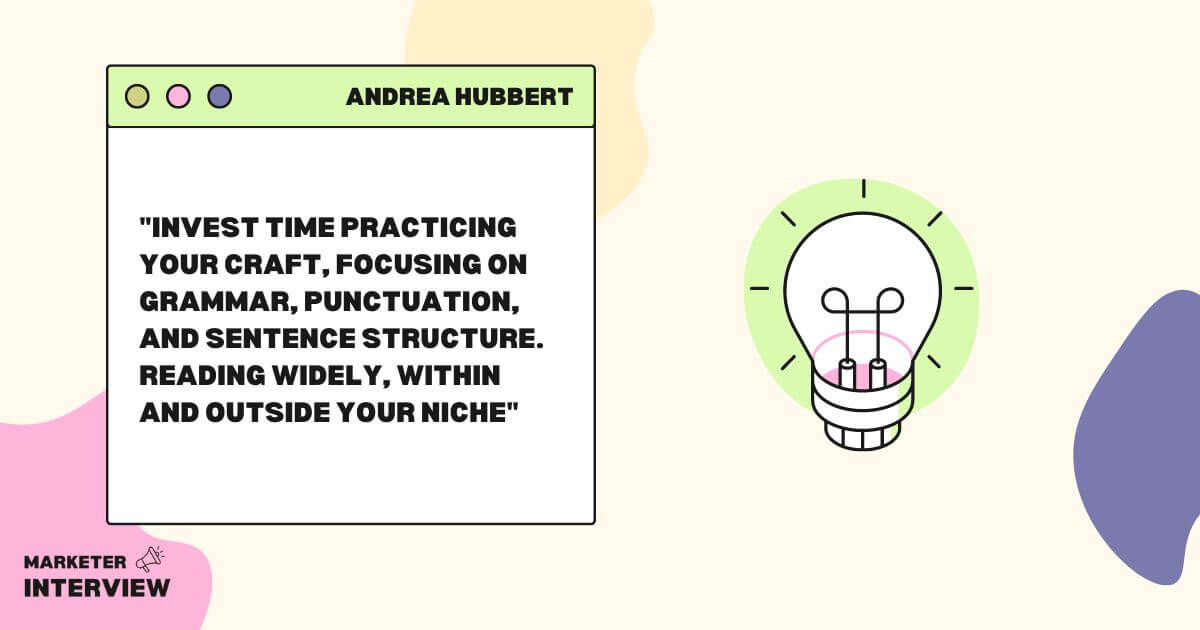
Another important aspect of copywriting is understanding the art of persuasion.
Study the principles of persuasive writing, such as using emotional appeals, establishing credibility, and building a logical argument. Learning these techniques can help drive readers to take desired actions.
Networking and building connections within the industry can also be invaluable for aspiring copywriters.
Attend conferences, join professional organizations, and engage with other copywriters on social media to learn from their experiences and gain insight into the industry. This can also help you discover job opportunities and establish a professional network.
